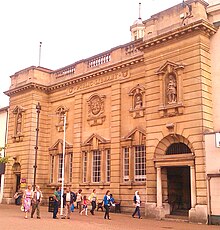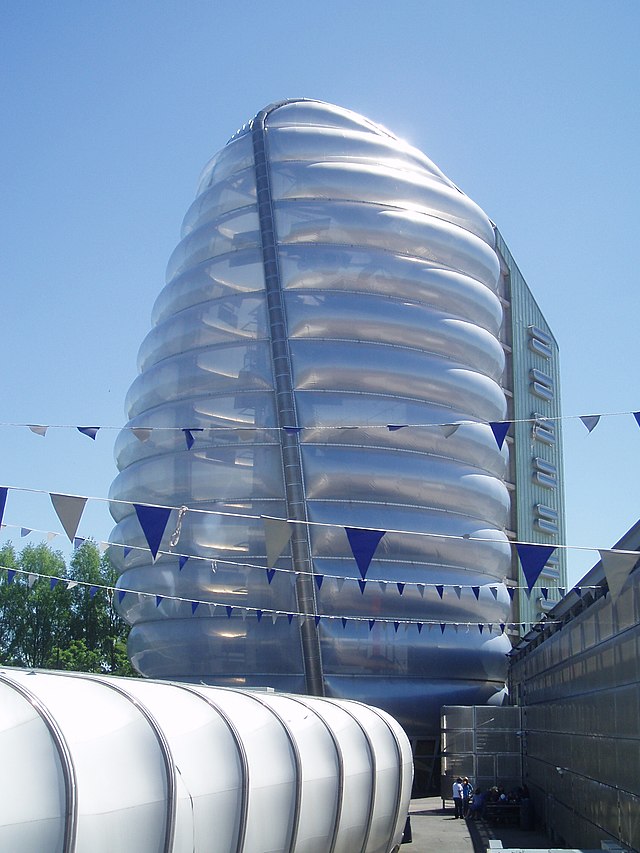.png) |
Rabbit food produced by Henry Bell of
Granthan |
Jane Lambert
Last September I tried to run a seminar on IP law as part of the Gravity Fields science and arts festival. To promote the seminar I wrote
What has intellectual property got to do with Grantham? 4 Sept 2015 and an introduction to patent law as a
Socratic dialogue in The Beehive pub. Try as I might I just couldn't raise any interest in IP and I had to cancel the seminar.
But a case that came before Mr Justice Arnold a few weeks ago shows that that there is at least one Grantham business that is interested in IP for it has contributed to the development of trade mark law. In
Supreme Petfoods Ltd v Henry Bell & Co (Grantham) Ltd [2015] EWHC 256 (Ch) (12 Feb 2015) the Grantham pet food producer
Henry Ball & Co. successfully resisted a claim by Ipswich based
Supreme Petfoods Ltd. for trade infringement and passing off. It is a very long, and unless you are a trade mark geek, difficult to follow, judgment but I have analysed it in my case note
Trade Marks and Passing Off: Supreme Petfoods Ltd v Henry Bell & Co (Grantham) Ltd. 28 Feb 2915 which appears in my NIPC Law blog.
Basically, Supreme Petfoods objected to the packaging of Henry Ball's products because they had registered the word SUPREME as a word mark and various signs that incorporated the word SUPREME as device marks for various types of animals food. The judge characterized their claim as an attempt "to monopolise use of the word SUPREME as a trade mark for animal food." He didn't let them do it. He invalidated several of Supreme Petfoods' registrations except for small animal foods and held that Henry Ball did not infringe the trade marks that remained.
This is an important case for several reasons.
First, Mr Justice Arnold stressed that EU and hence UK trade mark law must be consistent with an annexe to the agreement that established the World Trade Organization called TRIPS (The Agreement on Trade-Related Aspects of Intellectual Property Rights) wherever possible. That is because it is an international agreement which HM government and the governments of all the other member states of the EU signed with most of the rest of the world's governments and
pacta sunt servanda (promises need to be kept).
Secondly, the judge explored what makes a trade mark distinctive. It can be inherently distinctive simply because of its uniqueness or in the case of common English words like SUPREME it can acquire distinctiveness through making lots of sales and clever marketing. His lordship focussed on acquired distinctiveness.
Thirdly, the judge laid down six conditions that must be satisfied for a claim under s.10 (1) of the
Trade Marks Act 1994 and art 9 (1) (a) of the
Community Trade Mark Regulation which he claimed to have been established by a long line of cases in the Court of Justice of the European Union. Though Mr Justice Arnold made no claim as to originality in respect of this analysis I think he is way too modest because I have never seen them anywhere else. In
Enterprise Holdings, Inc v Europcar Group UK Ltd and another [2015] EWHC 17 (Ch) (13 Jan 2015) which he decided a month earlier he made a similar analysis of the case law for claims under s.10 (2) and (3) of the Act or arts 9 (1) (b) and (c) of the Regulation. When read together
Europcar and
Supreme set out almost everything you need to know about trade mark law.
Fourthly, his lordship analysed in detail the last two of the six conditions for a successful suit under s.10 (1) or art 9 (1) (a), namely the use of the defendant's sign
"(v) .... must be in relation to goods or services which are identical to those for which the trade mark is registered; and
(vi) it must affect, or be liable to affect, one of the functions of the trade mark."
Most of Mr Justice Arnold's judgment was on those two points. He decided them in the defendant's favour at paragraph [165] because
"Henry Bell's use of the sign SUPREME would be understood by the average consumer as being purely descriptive."
In other words Henry Bell's packaging suggested that its food was of supreme quality and not that it came from Supreme Petfoods Ltd.
Fifthly, he made a very pithy comparison of mark and sign and specified goods and goods in use at paragraph [185] before throwing out the claim under s.10 (2) and art 9 (1) (b).
Sixthly, he did the same for the claim under s.10 (3) and art 9 (1) (c).
So this is a great case if you are a litigation solicitor in Lincoln or commercial lawyer in Spalding and your client walks into your office with a trade mark problem. Instead of thinking of learning curves and what they will do to your profits - or worse what patent counsel will do to those profits - you should read this case with my analyses and all will become clear I promise you.
Now I know this has nothing to do with intellectual property law but I am a ballet nut and the only other person I know who is crazier about ballet than me is called Michelle and she also comes from Linconshire. Your great county, oh
Yellow Bellies, happens to host one of the best little dance companies in England called
Chantry Dance Company which you really should support with your patronage. Last year they ran a workshop at the Drill Hall in Lincoln. Here is the video of the show that put together with the help of two folks from Yorkshire and two from Coventry. Can you identify the dancer stage right in the second row?
'Dream Dance' workshop from
Rae Piper on
Vimeo.
If you can I will buy you a pint next time we are both in
The Beehive.
If you want to discuss Supreme Petfoods and Bell or trade mark law in general give me a ring on 020 7404 5252 during normal office hours or message me through my
contact form. Hasta luego amigos.



.png)



